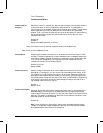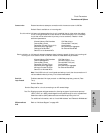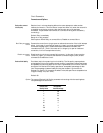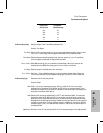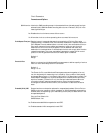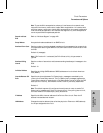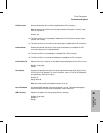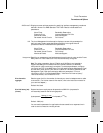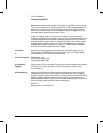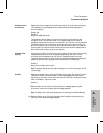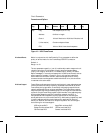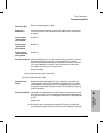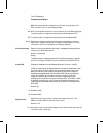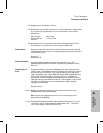
Link-quality-monitoring (a Point-to-Point initial configuration option described in
RFC 1172) is the process where Point-to-Point determines the frequency and
magnitude of data loss across the circuit. With link-quality-monitoring enabled, both
ends of a Point-to-Point circuit can exchange Link-Quality-Report packets. These
packets serve two functions. First, they provide a “keep-alive” indication to let the
local end know that the remote Point-to-Point peer is operational. Second, link-
quality-report packets contain a series of counters providing dynamic information on
the number of octets and data-link frames received and transmitted.
Options
If you do not want to enable link-quality-monitoring or if the remote Point-to-Point
peer does not issue link-quality-report packets, enter 0.
If you do want to enable link-quality-monitoring, LQM Time (secs) sets the
maximum time interval (in seconds) between link-quality-report packets
generated by the remote end of the Point-to-Point circuit. Failure to receive a link-
quality-report packet within the expected interval indicates Point-to-Point link
failure.
Note: The remote Point-to-Point peer is free to generate link-quality-report packets
more rapidly than specified by the LQM Time (secs) parameter. However, it must
generate packets at least as frequently as specified by LQM Time (secs).
To avoid declaring link failure in the light of a (possibly) single lost link-quality-
report packet, the multiprotocol router waits until five link-quality-report periods
elapse without the receipt of a link-quality-report packet before declaring the link
down. For example, if LQM Time (secs) is set to a value of 3, the multiprotocol
router declares the link down after a 15-second interval between the receipt of link-
quality-report packets.
Upon declaring the link down, Point-to-Point closes all active network (NCP) and
data-link layer (LCP) connections. If LCP Auto-Restart is set to Yes, it then attempts
to re-establish the LCP connection. If LCP Auto-Restart is set to No, Point-to-Point
makes no attempt to re-establish the LCP connection (thus leaving it up to the
remote Point-to-Point peer to restart LCP).
Management Type
Assigns the interface management mode. The between the multiprotocol router and
the Frame Relay network is generally defined by one of two commonly implemented
standards. Both standards generally specify notification procedures for adding or
deleting PVCs, indications of the availability or unavailability of PVCs, and
verification of link integrity.
Default: ANSI Annex D
Circuit Parameters
Parameters and Options
4-18



